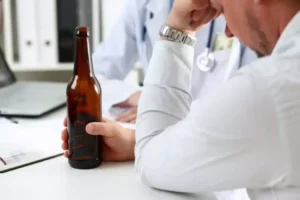Alcohol Cravings in Recovery: Duration and Strategies for Coping

This means you need to drink more in order to feel ‘drunk’ and you’re likely to be much more susceptible to experiencing alcohol withdrawal symptoms. These can include feelings of anxiety, irritability, nausea and headaches, as well as intense cravings for alcohol. Medications are often used to manage the symptoms of alcohol withdrawal safely.

Need Help from Professionals to Manage Alcohol Cravings?
- Opioid addiction has its own set of medications, including methadone and buprenorphine, which can help manage withdrawal symptoms and reduce cravings.
- Remember, these foods are not miracle workers and they can’t instantly eradicate cravings.
- A person can speak with a mental health professional to better understand their alcohol cravings.
- In the United States, three drugs are approved by the Food and Drug Administration (FDA) for the general treatment of alcohol use disorder (AUD), including cravings (2).
Keep a list of emergency phone numbers on hand that includes contact info for your doctor, the police, a nearby hospital, and someone you trust. And consider joining a support group such as Alcoholics Anonymous. Find out how online treatment may be able to help you quit or cut back, 100 percent from home. More simply, our brains begin to regulate themselves with alcohol.
- This can be achieved through thoughtful meal planning and discovering new, delicious recipes.
- Positive lifestyle changes13 can set you up for long-term sobriety.
- Cognitive Behavioral Therapy, commonly known by its acronym, CBT, is a psycho-social intervention that helps individuals manage their problems by altering their cognitive processes and behavior.
What to Expect When You Stop Drinking
Our recoveries are strong, we have trusted communities and support networks around us and we’ve transitioned into an easier stage in recovery where we don’t grip so tightly onto sobriety. And all of a sudden, no matter how long we’ve been in recovery, we think we might go about drinking safely. Mindfulness-based interventions, such as yoga https://ecosoberhouse.com/ and meditation, can reduce alcohol cravings by helping you attune to the present moment. Studies have shown that mindfulness is beneficial for reducing cravings. This practice lets you become aware of bodily sensations and accept uncomfortable emotions. Cravings can cause stress and discomfort for someone trying not to drink alcohol.
Cognitive Behavioral Therapy (CBT)
- It also provides worksheets to help you uncover the nature of your urges to drink and to make a plan for handling them.
- Within 5 minutes, you’ll receive an email with these details – free of charge.
- For example, right now, alcohol is the leading cause of liver disease.
- Omega-3-rich fish like salmon and mackerel may also help improve focus and overall brain health.
The opinions expressed are the author’s alone and have not been provided, approved or otherwise endorsed by our advertisers. Sunnyside uses a psychology-based approach to help you drink more mindfully, no matter what your goal is. You’ll get a 100% custom plan, then daily texts to track your progress and help you stay on target. You might reach for alcohol when you’re really just thirsty, says Crews. Drink a cup of soothing tea or a tall glass of water before you imbibe—once your thirst is quenched, you may not feel the need for as much—or any—alcohol.
Am I drinking too much? Signs of a drinking problem
Within 5 minutes, you’ll receive an email with these details – free of charge. Going outside and walking can do wonders if you are having a particularly rough time. You may not feel like being how to reduce alcohol cravings physically active or going outside, but a good walk can completely recharge your mental and emotional state. Learn 18 ways to keep your mind occupied while facing alcohol withdrawal.
Question the Urge

Then check back in with yourself in minutes and see if the urge’s intensity has changed. Some of these tips may be more helpful early in your efforts to change your drinking habits, whether your goal is to cut back or to stop drinking entirely. These tips can be helpful for those making changes in their drinking on their own and not in an alcohol use disorder treatment program. Therapy with a trained mental health professional — particularly one who specializes in substance use and recovery — can be another great way to explore long-term changes in alcohol use. Josh Lee is a clinician and researcher with a focus on medication-assisted treatment of alcohol and opioid use disorders.
- Ask your doctor whether any medications may help in the process.
- But even when you don’t know anyone else trying to make a similar change, friends and loved ones can still offer emotional support.
- You might also hold onto a nonalcoholic drink instead, ask a friend to support you in difficult situations or simply exit early if temptation gets too strong, the NIAAA suggests.
- “Try sober Mondays or sober Mondays through Wednesdays,” he says.
Detox and Withdrawal

However, your healthcare provider may suggest using it even if you are still trying to decrease your alcohol use. Consuming Topamax and alcohol can be more dangerous for some people. If you are an older adult, your body breaks down alcohol more slowly. This means that you may experience worse side effects if you mix Topamax and alcohol.

